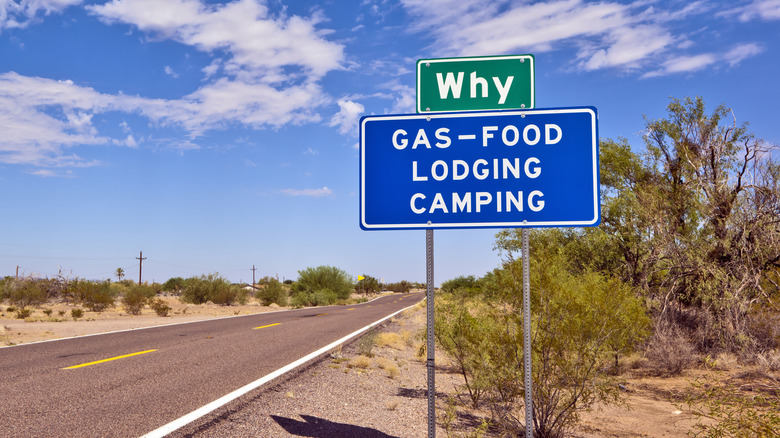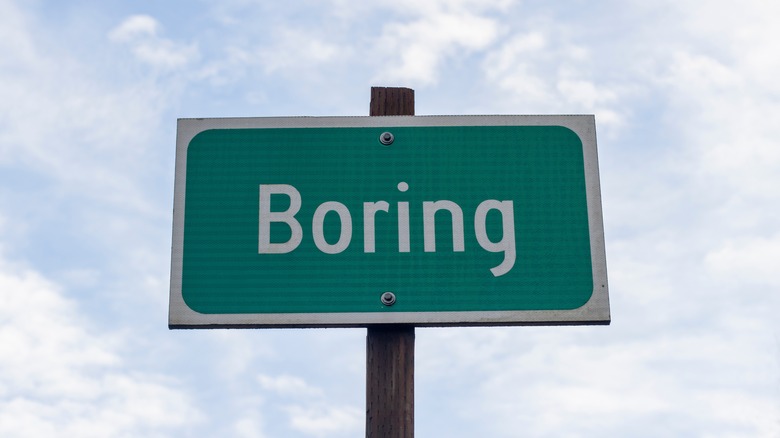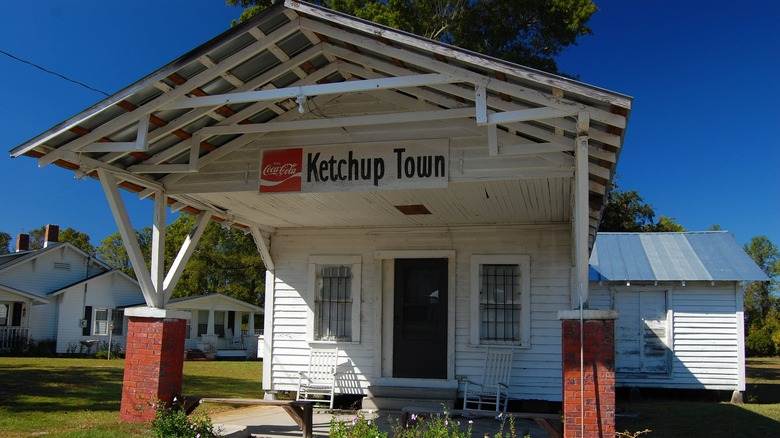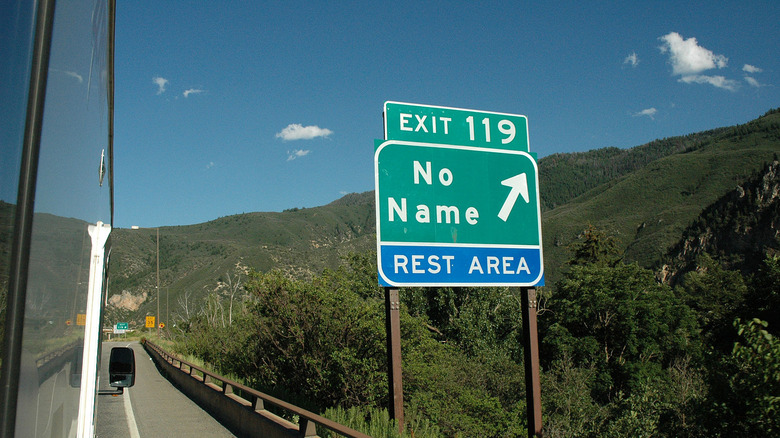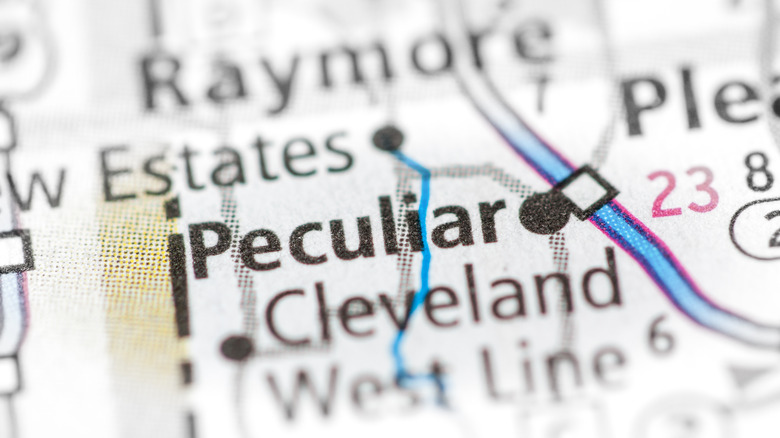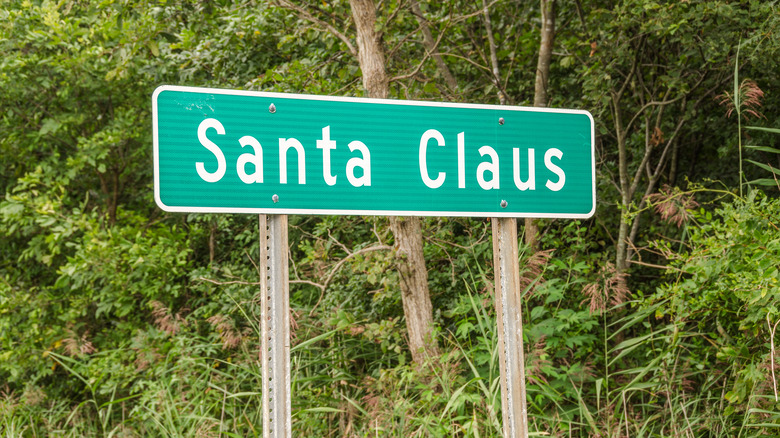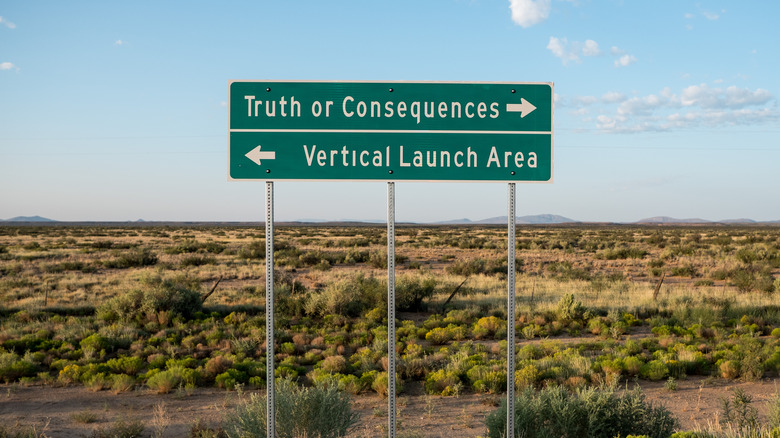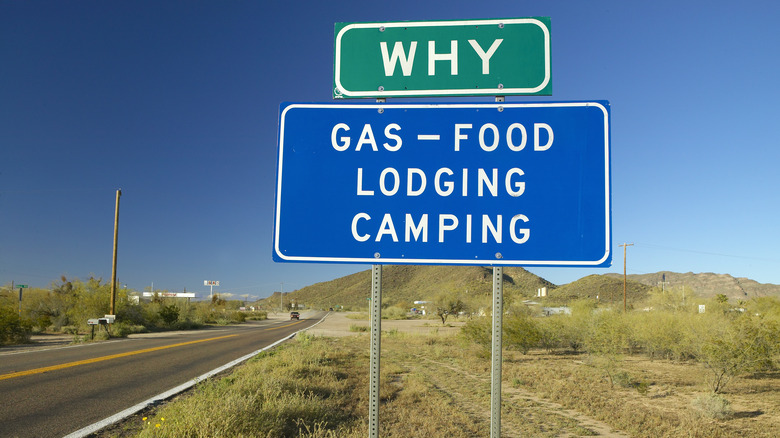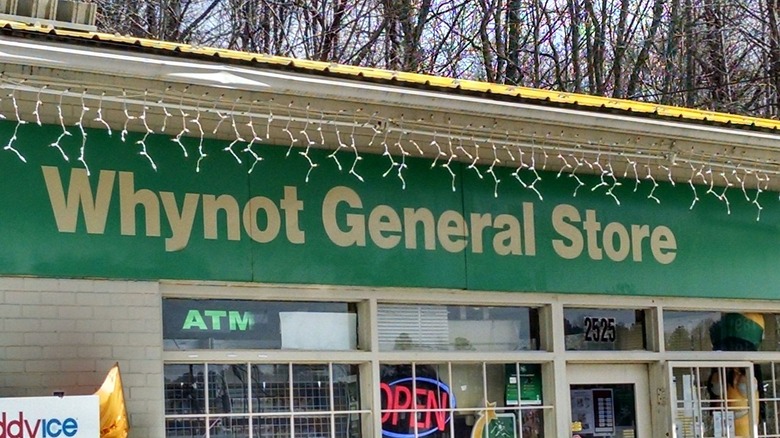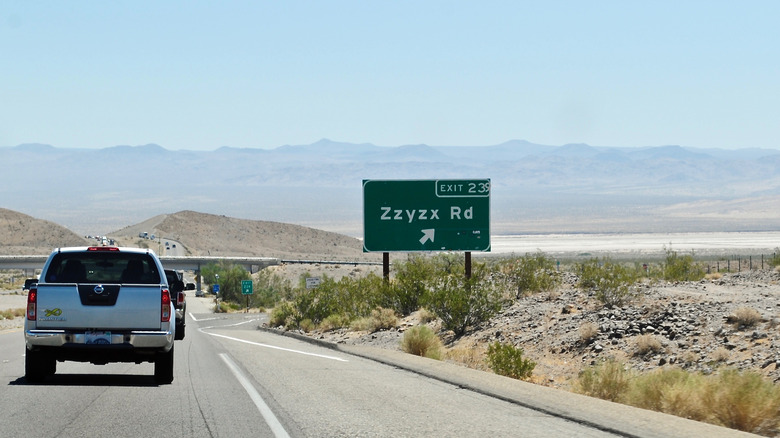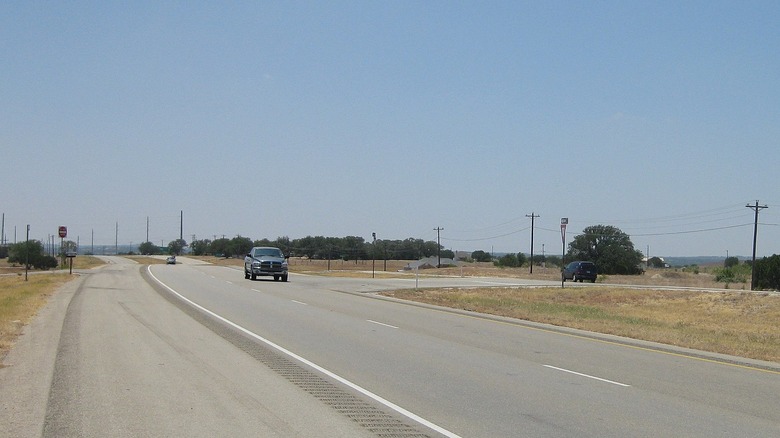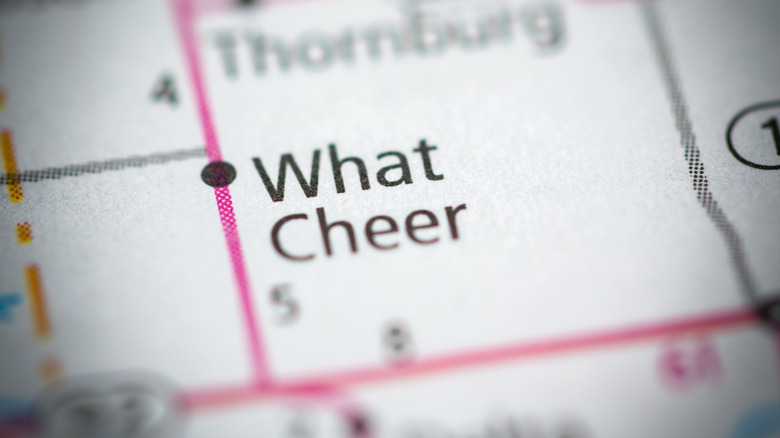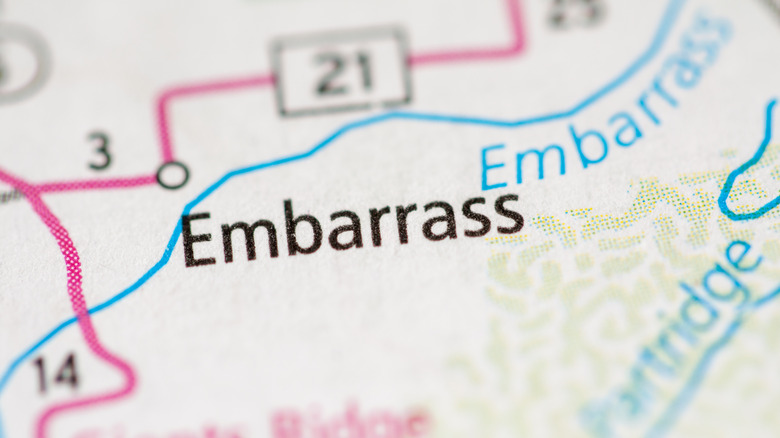The Stories Behind America's Strangest Place Names
Picture this: you're driving down the freeway on a cross-country road trip when you spot a sign in the distance. You squint to read it, and you can't believe your eyes: apparently, the next exit leads to a place called "No Name." Have you found yourself in a sci-fi novel or a creepy horror flick? Nope — you're just in rural Colorado.
"No Name" is far from the weirdest place name in America. Go to Arizona and you'll find a community named "Why." Go to North Carolina and you'll stumble upon "Whynot." And that's only the tip of the iceberg. Did you know that there's a town in Missouri with the peculiar name of "Peculiar"? You've heard of Santa Fe, New Mexico, and Santa Barbara, California — but what about good old Santa Claus, Indiana?
Want to learn more about the wildest and wackiest place names that the nifty 50 states have to offer? Buckle up, fasten your seatbelt, and get ready for a guided tour through some of the nation's most oddly named cities, towns, and unincorporated areas.
Boring, Oregon
Despite what you might think, Boring, Oregon, didn't get its moniker for being dull (it seems like a lovely place). Rather, the name has a more pedestrian origin. According to the unincorporated area's official webpage, it was chosen in 1903 to honor W. H. Boring, one of the community's first residents.
Boring has a sense of humor. The community's tagline is "An Exciting Place to Live and Work." On top of that, it recently formed an alliance with two similarly named municipalities in different parts of the world — "Bland, Australia," and "Dull, Scotland." "United by common pain — and the prospect of a little extra tourism," news site Good.is notes, they teamed up in 2013 "to create what they call the League of Extraordinary Communities, but which many have dubbed the Trinity of Tedium."
How did this strange sisterhood come to be? In 2012, a Scottish woman cycling through the Pacific Northwest saw a sign for Boring, and "decided to tell the local Community Planning Organization about Dull." This led to a "Dull & Boring" Facebook page that the communities used to build fellowship and cook up ways to show the world just how fascinating they were. The following year, Neil Pokoney, the mayor of Bland, heard about the partnership and asked if his town could join in. Now, the trio stands together, a happy family. Apparently, it's brought plenty of business to Boring — Norman Rice of the Boring Community Planning Association says that merchandise sales have only increased.
Ketchuptown, South Carolina
How did the unincorporated community of Ketchuptown, South Carolina, get its name? If you guessed that it's somehow related to the invention of the beloved condiment, or perhaps the Heinz family, you'd be wrong. Its origin story actually has to do with a small country store, according to the South Carolina Picture Project.
The Ketchuptown lore begins with a man named Herbert "Hub" Small, who, in 1927, bought an acre of land from Lewis Gerrald. He built a house for his family on the plot; he also constructed a general store. The surrounding area was largely desolate, so the store was popular with travelers passing through the region. It was also a hit with nearby farming families, who appreciated it as a place where they could gather to "catch up" on local news. Eventually, assembling at the general store each Saturday became a local tradition. Over the years, "Catch-up Town" morphed into "Ketchuptown" — largely because Small's young daughter, Ruth Marie, liked to sketch the letter K. In a letter she wrote for the Horry County Historical Society, an adult Ruth Marie looks back on her childhood there fondly: "The logging business brought many newcomers to the area from Sweden and Finland ... Square dancing was a popular recreational activity for the loggers and the Swedes and Finns were often guests in the Small home on square dance evenings."
The Ketchuptown store is no longer operating — but Ketchuptown still exists, with a grand total of 75 residents.
No Name, Colorado
As far as names go, you can't get much more ironic than "No Name." According to Classroom, this unincorporated community in Chicago received its name shortly after the construction of Interstate 70. When employees from the Colorado Department of Signage went to label the area, they noticed that the region did not have a formal designation. Hence, they labeled the sign for Exit 119, the ramp that led into the area, "No Name." Over time, visitors took to the name, amused by how odd it sounded. When state officials tried to persuade them to change it to something more commonplace, they insisted that they keep the silly moniker. Hence, it remains to this day.
In addition to being featured as a curiosity in dozens of articles, No Name is celebrated for its beautiful natural wonders — No Name Canyon and No Name Creek. Don't be fooled by its name, or lack thereof — it really is a notable destination.
Peculiar, Missouri
How did Peculiar get its peculiar name? According to Missouri Life Magazine, it came from a scuffle with the United States Post Office. Edgar Thompson, the town's first postmaster, initially submitted the name "Excelsior" for consideration. However, it was rejected because a town in nearby Atchison County already had that name. Thompson then suggested two other names, both of which were also rejected. Frustrated, the town's representatives asked the U.S. postmaster general if he wanted to choose the name himself. "We don't care what name you give us," they wrote in a letter, "as long as it's sort of peculiar." The postmaster general, having a sense of humor, replied, "My conclusion is that in all the land it would be difficult to imagine a more distinctive, a more peculiar name than Peculiar." The verdict was out: "Peculiar, Missouri" it was.
Eventually, the Peculiar Chamber of Commerce came up with a slogan to boost the town's reputation: "Peculiar, Missouri: Where the Odds are With You." According to Mayor Holly Stark, the slogan has never been made official, but you can find it on merchandise around town.
Santa Claus, Indiana
According to Indiana news station WISH-TV, Santa Claus is recognized as "America's Christmas Hometown" — but it didn't always have that reputation. In fact, when it was founded in the 19th century, it wasn't known as "Santa Claus" but as "Santa Fee." The town ran into trouble in 1856, when its government applied for a post office. They were told that "Santa Fee" sounded too similar to "Santa Fe," the capital of New Mexico. Hence, they would need to choose a new name.
According to local legend, the town held a community meeting to discuss name options on Christmas Eve. At one point during the meeting, a bell jangled with the arrival of a latecomer. Hearing the noise, a delighted little girl called out, "Santa Claus!" The residents decided it was the perfect name.
Santa Claus, Indiana, is home to a theme park called "Holiday World & Splashin' Safari." There, visitors can enjoy an assortment of rides and waterslides — and even meet Santa Claus himself. "On pretty much any given day, the park is going to have more guests than people living in the town of Santa Claus, and we're pretty proud of that," fourth-generation owner Lauren Crosby says. Holiday World isn't the town's only highlight. It's also known for its post office, which receives countless letters from kids writing to Santa every year. Per Roadside America, the post office sends approximately 20,000 response letters to children annually, helping to keep the Christmas spirit alive.
Truth or Consequences, New Mexico
Truth or Consequences may well be the only town named after a 1940s game show. According to the Sierra County, New Mexico website, this small community originally had a far more normal moniker — "Hot Springs." Everything changed in 1949, when Ralph Edwards, the game show's host, told his staffers that he wanted to celebrate the program's 10th anniversary in a big way.
The staffers brainstormed for a while. Then one of them came up with an unconventional suggestion: "Why not find a town or city somewhere in America that would be willing to change its name to 'Truth or Consequences,' and do the anniversary broadcast from that city?" Edwards was a fan of the idea, and he sent out an announcement. Several towns were interested in participating in the promotion, but Hot Springs stood out most to him due to its "pleasant climate" and "the genuine western hospitality of the people." A producer visited Hot Springs to work out the details with the mayor and Chamber of Commerce. Then, on March 31, 1950, a special election was held, giving the town its current moniker. Edwards conducted the anniversary broadcast the very next day.
Edwards maintained a special relationship with the New Mexico community throughout his lifetime. From the 1950s through the late 1990s, he returned to the city yearly to host a Truth or Consequences "Fiesta" with a host of celebrity guests. Edwards died in 2005, but the townspeople celebrate "Ralph Edwards Day" each April 1.
Why, Arizona
Why name a town "Why"? Look no further than the Arizona Oddities article "Why Why Is Why" for an explanation. The story begins with Arizona residents Peggy and Jim Kater, who "homesteaded at the base of the Little Ajo Mountains, near the junction of State Routes 85 and 86" many decades ago. When asked where they lived, the Katers always answered, "the Y," as the two freeways formed a Y-shaped intersection.
Over the years, other homesteaders began to move to the region. Eventually, it had so many residents that its own post office was needed. When the Katers were asked for a town name, they simply answered, "Y." Alas, there was a small problem — an Arizona state law dictated that every town and city name had to have at least three letters. Hence, the "W" and "H" were added — partially because the Katers found it funny that "people were always asking why anybody would live in such a remote place."
The area's infamous Y intersection no longer exists — the Arizona Department of Transportation eventually changed it to a more traditional T. However, "Why is still Why, and most everybody who goes there still asks why."
Whynot, North Carolina
Not to be confused with "Why" is Whynot, North Carolina. The folks at Southern Living Magazine were curious about the story behind the name, so they reached out to Tammy O'Kelley, executive director of the Heart of North Carolina Visitors Bureau, for answers. According to O'Kelley, it comes from a debate that seemed to go on forever. When the town was established in the 18th century, residents gathered at a community meeting to choose its name — but they just couldn't settle on a name. "Why not name it that? Why not name it this?" various townspeople suggested, for hours on end.
Eventually, a local farmer got frustrated. "Why not name it 'Why Not' and then we can go home?" he called out. Everyone agreed that it was the perfect solution, and "Whynot" was born.
Whynot isn't just famous for its odd name. It's also known for its pottery, which is renowned the world over.
Zzyzx, California
The highway sign for Zzyzx (prounced "Zye-Zex") stumps plenty of travelers driving between Las Vegas and Los Angeles. How did this desert oasis get its confounding name? Per Roadside America, the legend involves a quack doctor with a wild publicity scheme.
The region now called "Zzyzx" was first known as Soda Springs. Then aforementioned quack, Curtis H. Springer, passed through the area and decided that it would be the perfect location for a health resort where he could peddle his "miracle cures." He and his wife filed a claim to 12,800 acres of the area, considered public lands. In order to draw in customers, he would call the resort "Zzyzx." Why? Well, "Zzyzx" was "the last word in health," and accordingly, it would be the last listing in any directory.
In its heyday, Zzyzx was a hopping destination for the wealthy and health-conscious. The resort boasted "natural" hot springs (totally artificial), a 60-room hotel, a church, and a majestic castle. Springer even ran his own radio station from the compound, with programming that incorporated music and scripture (as well as his pseudo-scientific ramblings). The enterprise collapsed, however, in 1974, when Springer was arrested for breaking FDA laws with his tenuous claims about his products' healing properties. Today, Zzyzx is something of a roadside attraction — curious visitors can poke around the grounds (where some of the structures are still standing), and "educational and research groups are welcome to make reservations to stay overnight on the site."
Ding Dong, Texas
KERA News reports that Texas is full of wacky-sounding cities and towns. The Lone Star State has plenty of oddly named places, including "Bacon," "Beans," "Bigfoot," "Bobo," "Earth," "Happy," "Hoop and Holler," "Noodle," "Oatmeal," "Smiley," and "Zipperlandville" — but the strangest of them all might be "Ding Dong."
"Ding Dong" was founded in the 1930s by nephew-uncle pair Bert and Zulis Bell. When a hired hand was asked to paint a sign for the duo's country store, he took creative license and represented the two men as bells. A neighbor with a sense of humor saw the sign and suggested that the hired hand add the words "Ding Dong" to the sign. Playing along, he painted them on with a smile. Soon, all the locals were calling the surrounding area "Ding Dong." The name is unconventional, but hey — no one could deny that it has a nice ring to it.
What Cheer, Iowa
How did What Cheer get its name? Let's turn back the clock to 1855, when, according to Indiana news outlet The Gazette, a man named Peter Britton arrived in the area and plotted out 14 acres so he could found a town. He decided to name it "Petersburg," meaning "Peter's city." (How original.)
In 1864, a man named Joseph Andrew came to town and opened a store. As the region grew more populated, he decided to take it upon himself to organize a post office and mail route. In order to do so, he needed to submit an official town name. It would've made sense for him to write down "Petersburg" — but he had another idea. He had heard the old English greeting "What Cheer," and thought it flowed off the tongue nicely. "What Cheer," he felt, would make a way better name.
As one might expect, Peter Britton was vehemently opposed to this idea. However, Andrew's determination won out. The town is called "What Cheer" to this day.
Embarrass, Minnesota
The name "Embarrass, Minnesota" doesn't have an embarrassing origin story. According to Slate, it actually has to do with the river that flows through the area. When French priests and fur trappers passed through in the 1700s, they were beset by its treacherous curves, onslaught of driftwood, and, in certain sections, low water levels. The French-Canadian lumberjacks who settled in the area were also frustrated by the river, as they often lost their freshly chopped logs to its rushing rapids. Thus, the French decided to call it "Rivière d'Embarras," which roughly translates to "River of Obstacles" or "River of Obstructions." By the time the 19th century rolled around, its name had become anglicized, and it was known as "Embarrass River."
Around the turn of the 20th century, Finnish immigrants moved into the area. In 1905, they officially organized a township and named it "Embarrass," after its defining body of water.
